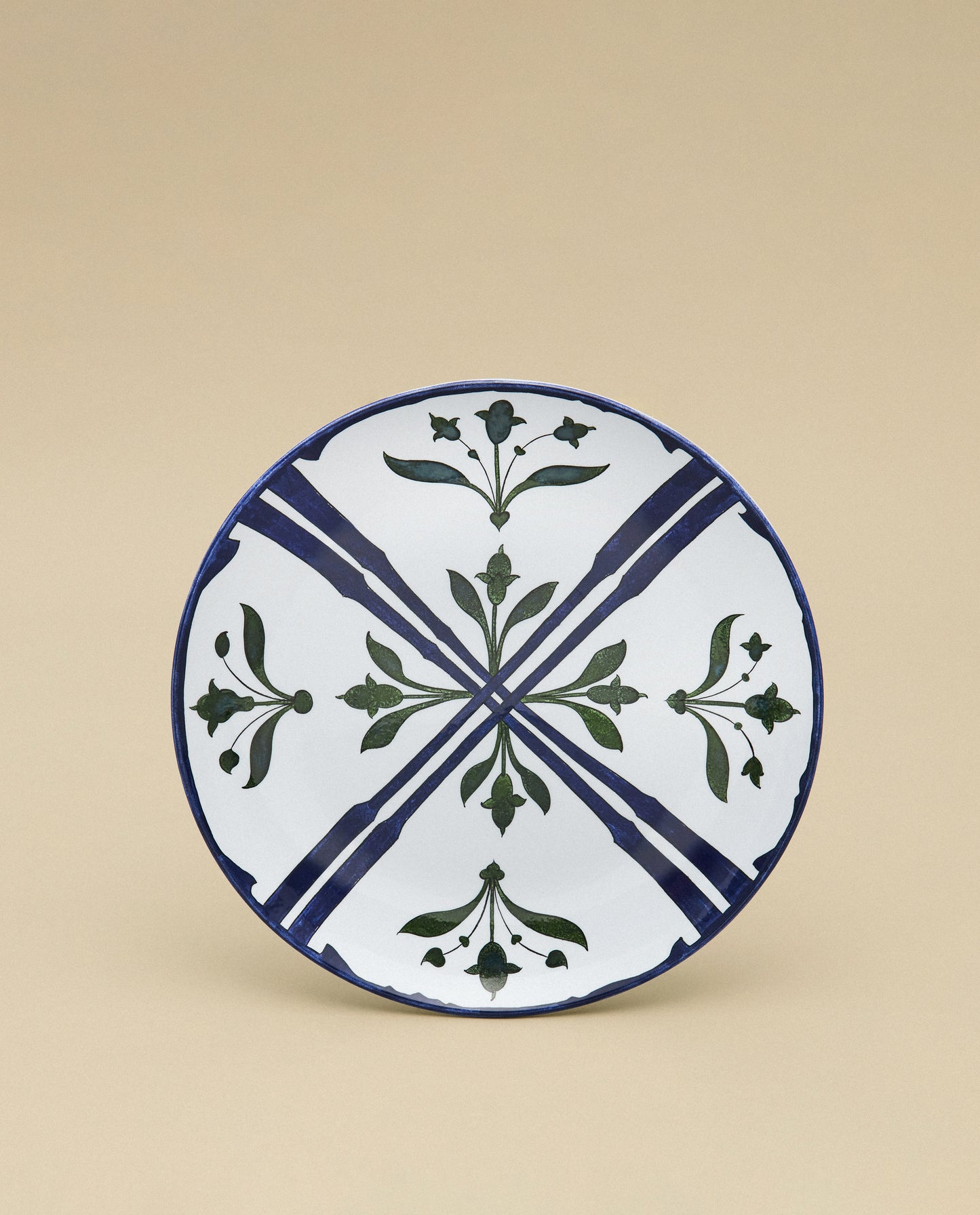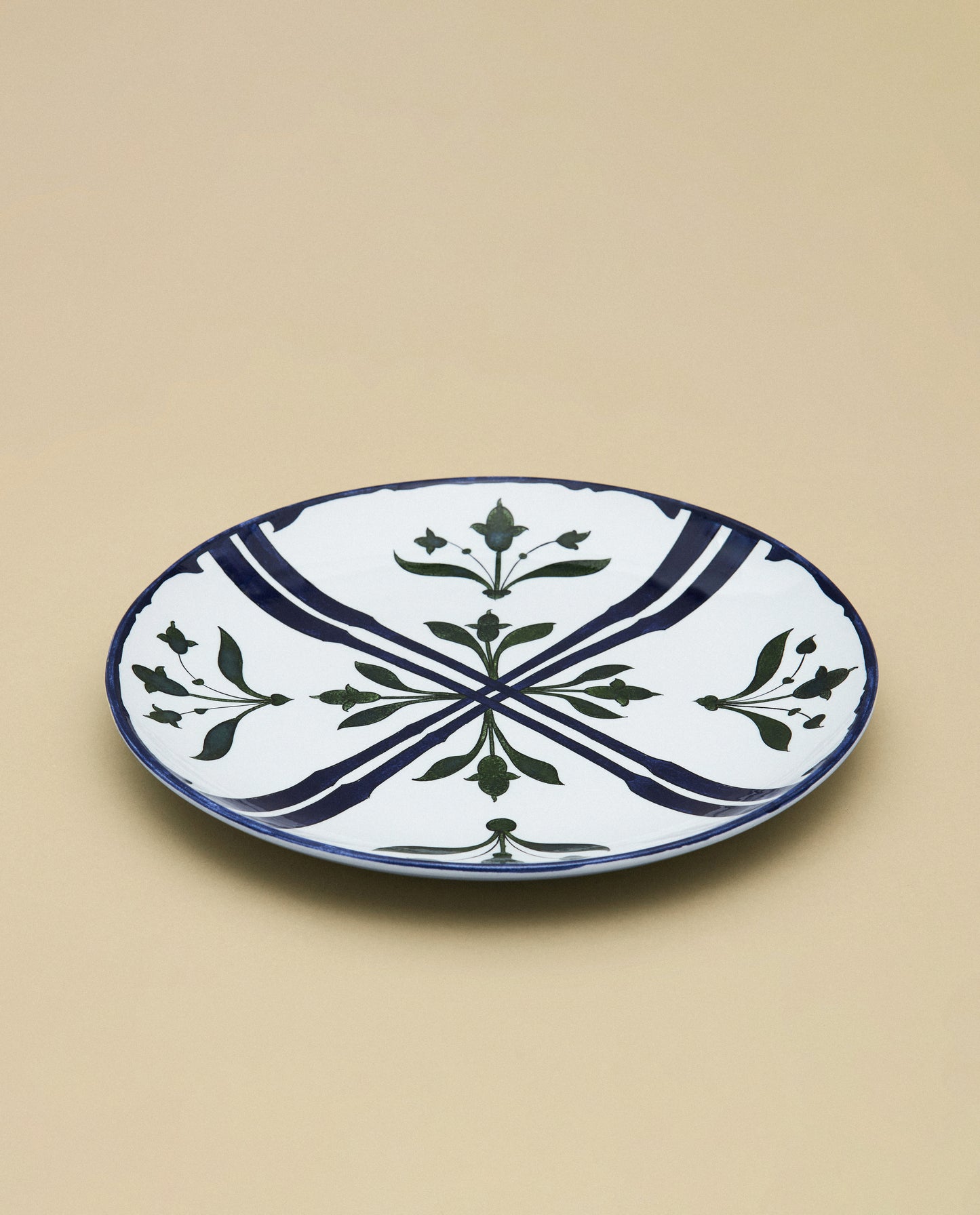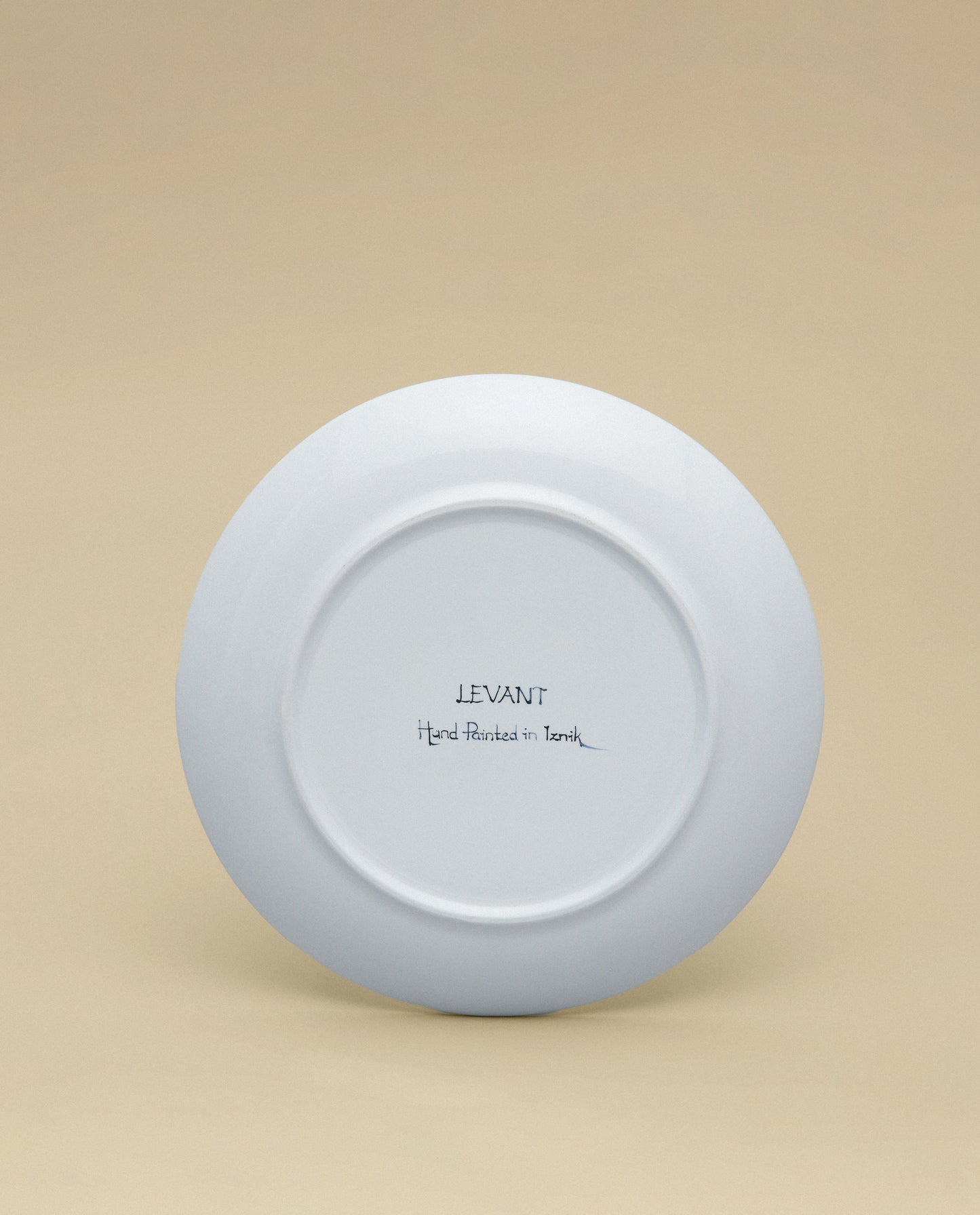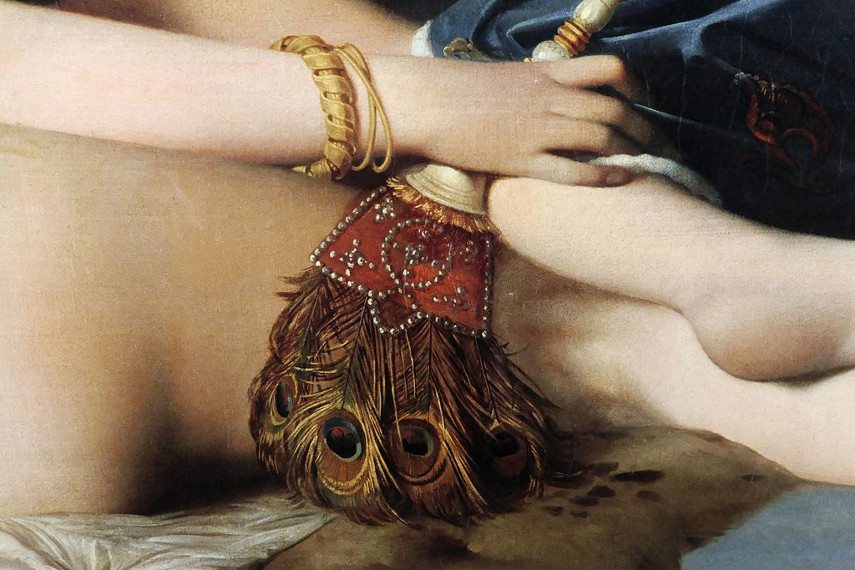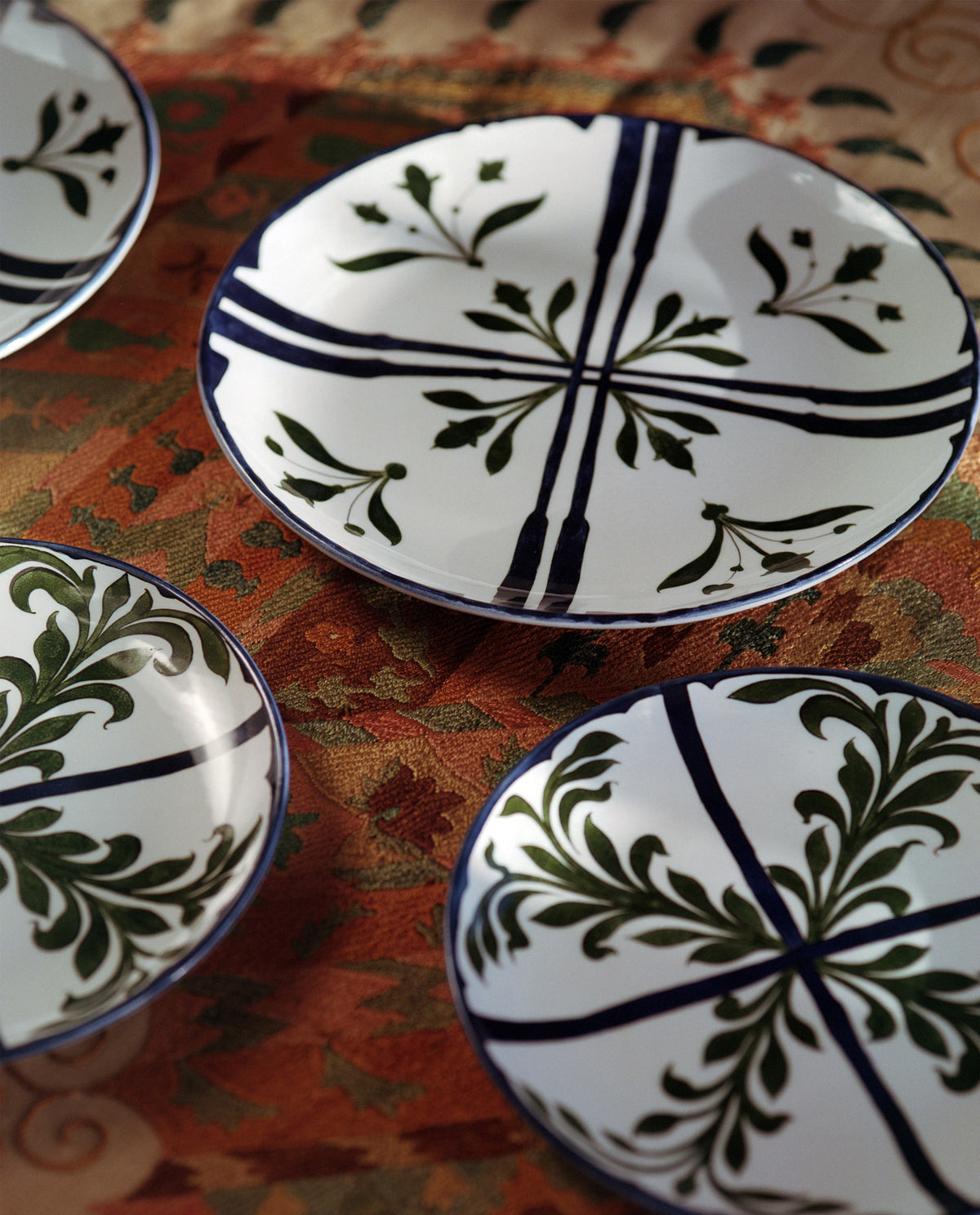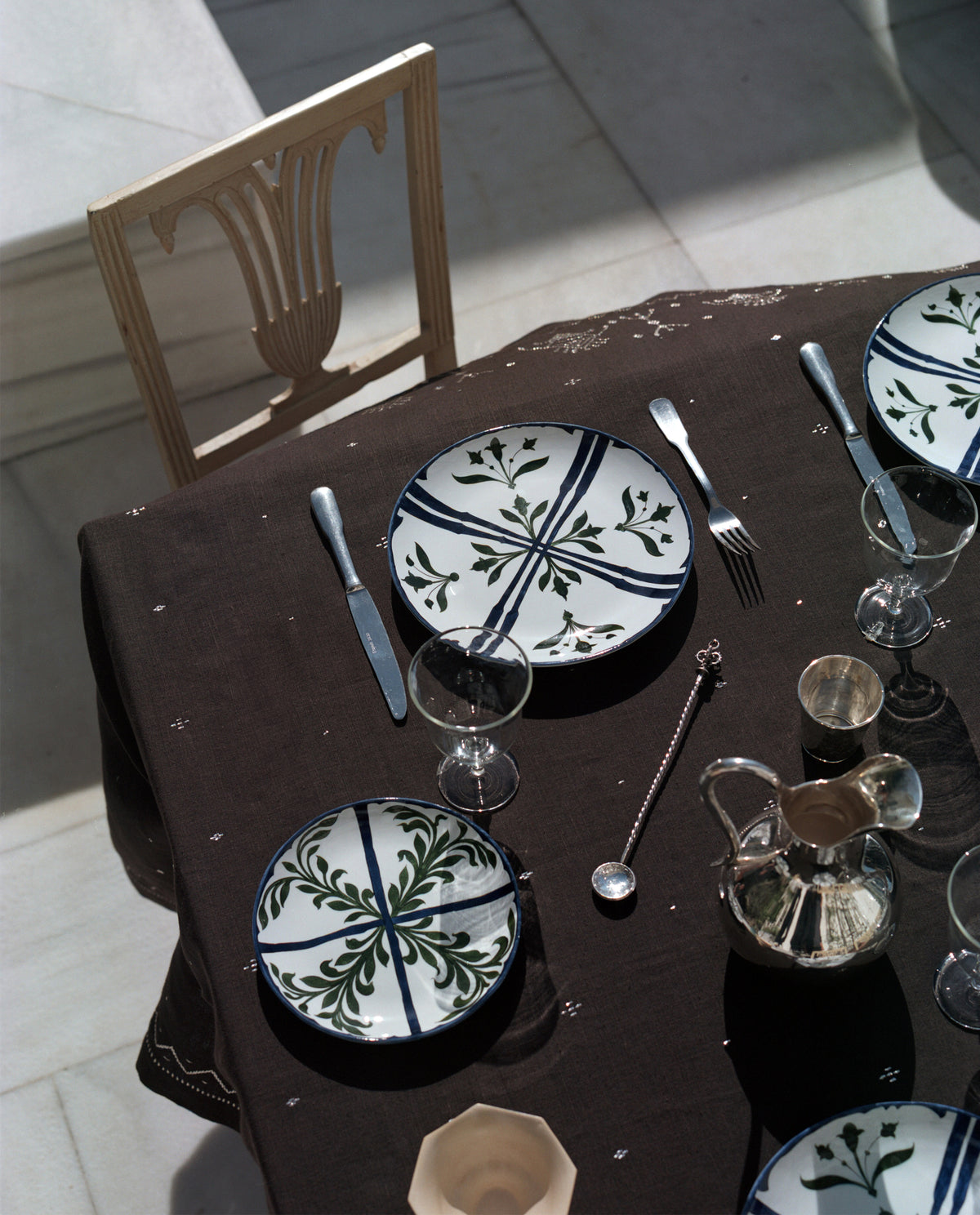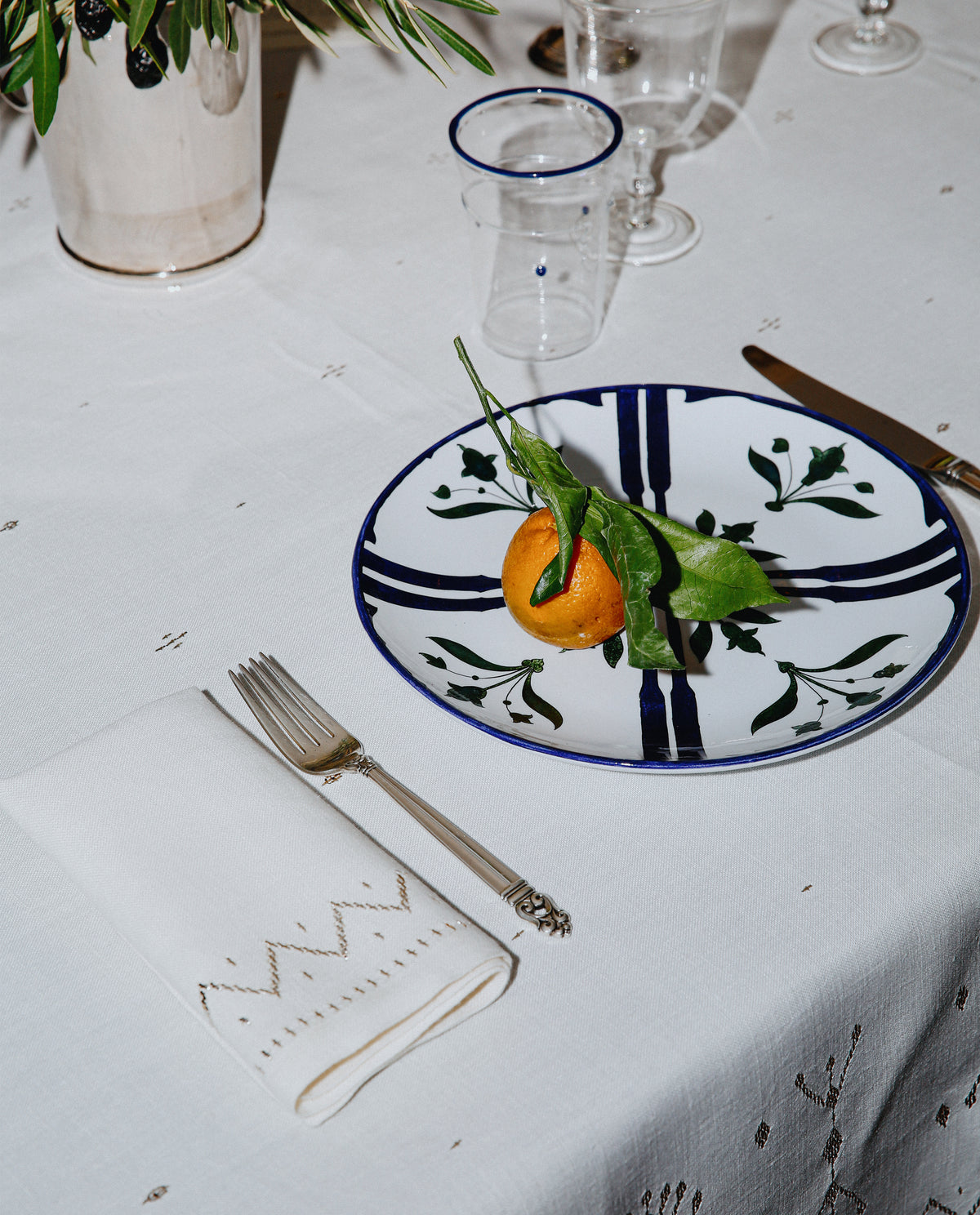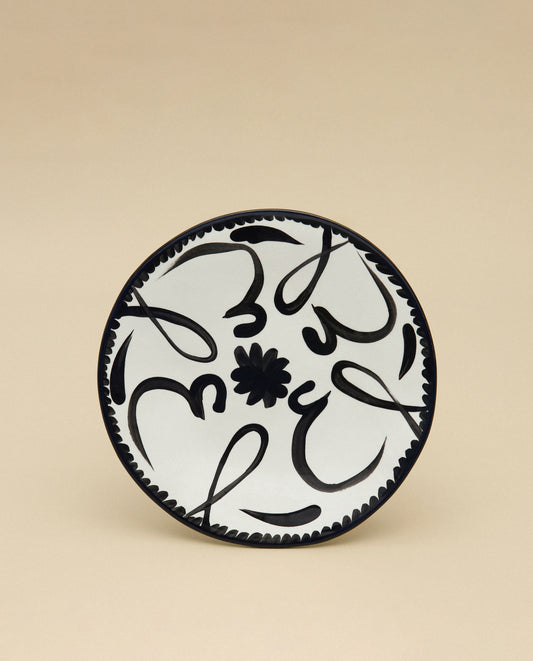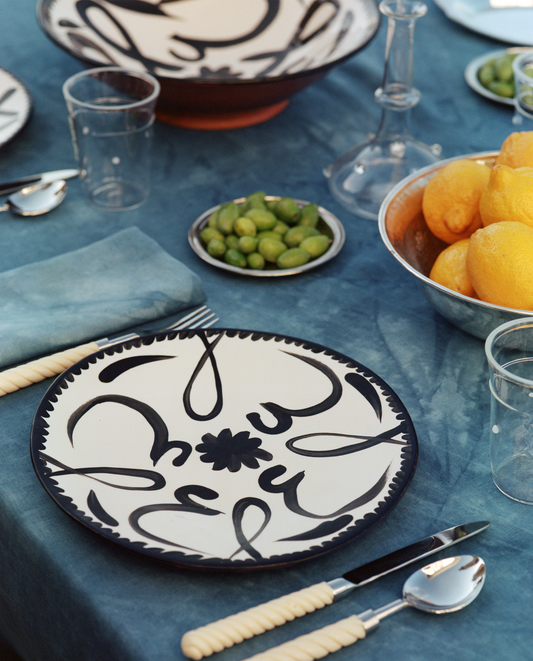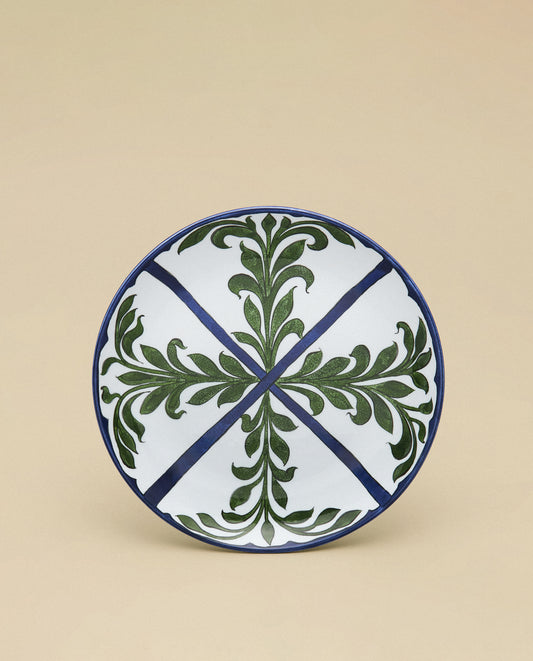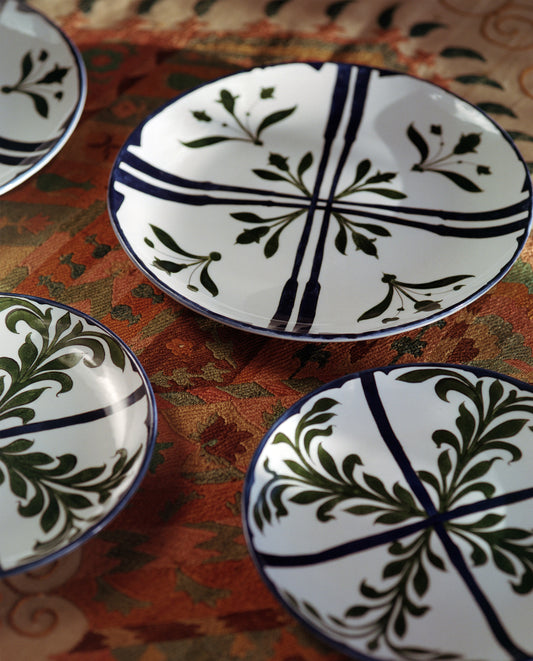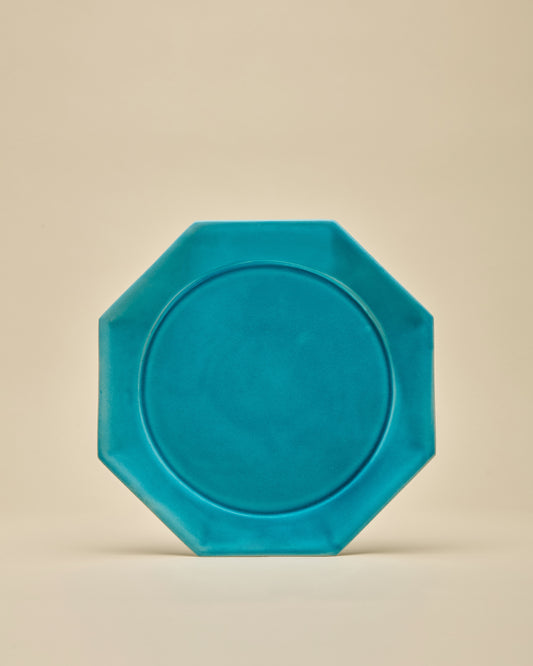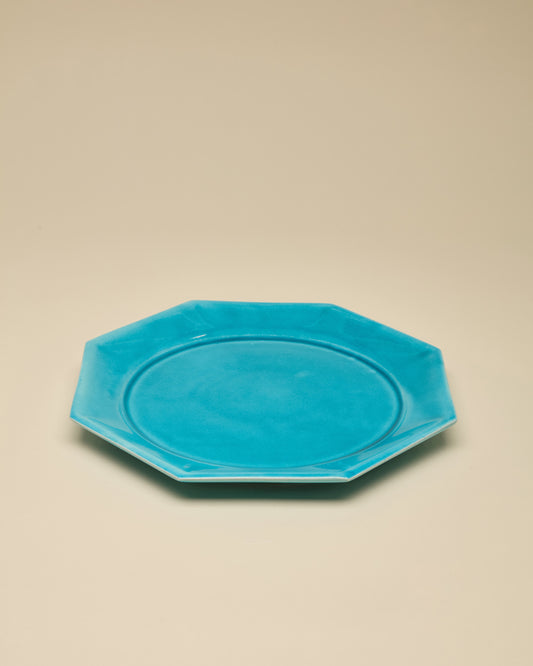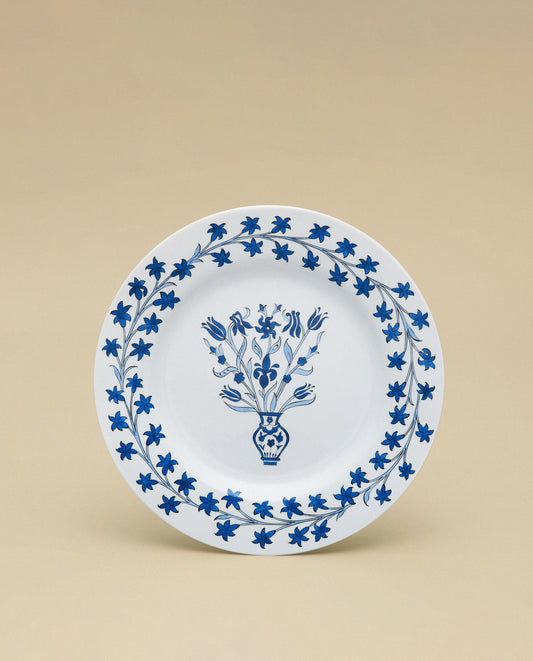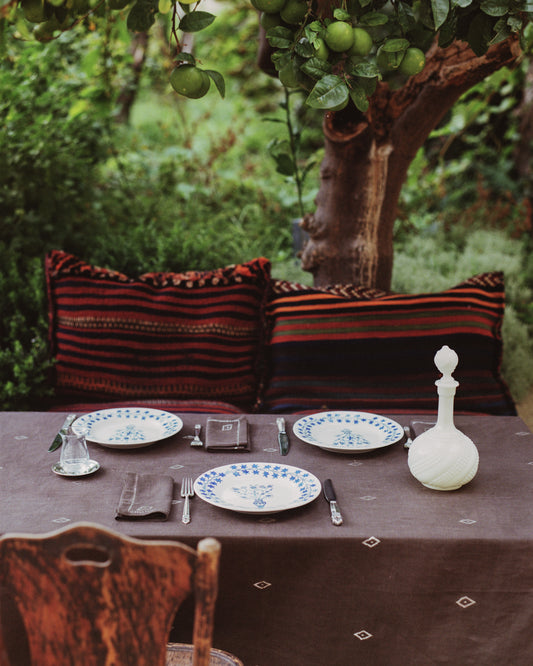The Layla Plate
The Layla Plate
Regular price
$160
Regular price
Sale price
$160
Unit price
per
The Layla plate is inspired by early Islamic motifs and lustreware pottery dating back to 11th century Kashan, Persia. Pottery from this region was distinguished by the delicate execution of its decorative patterns, which mimicked the shape of silver vessels. Hand-painted by master artisans in Iznik, Turkey, the Layla features a double-lined design in a striking blue glaze, which divides the plate into four sections of leaf and bud motifs.
Please note that all items are hand-painted, slight variations may occur.
Please note that all items are hand-painted, slight variations may occur.
Product Details
Product Details
Product Care
Product Care
Couldn't load pickup availability
